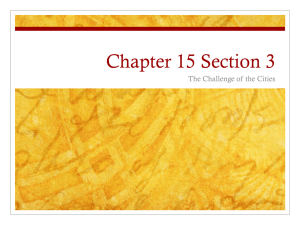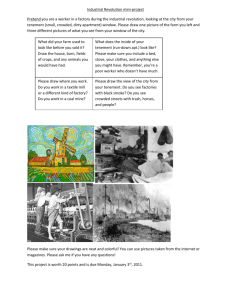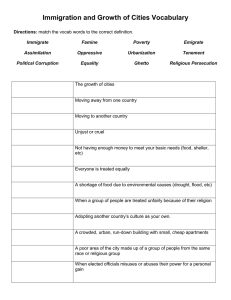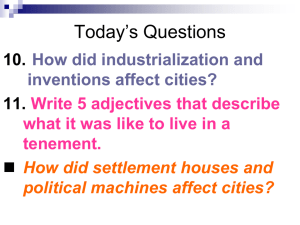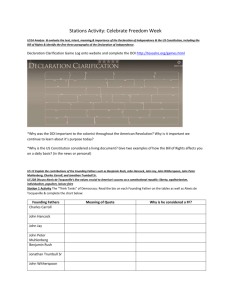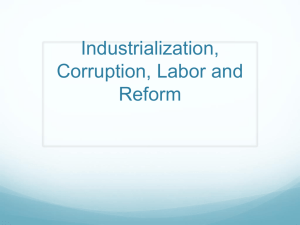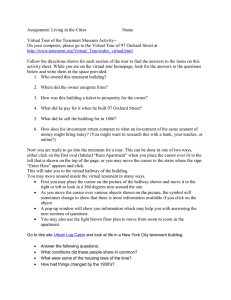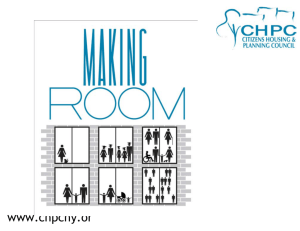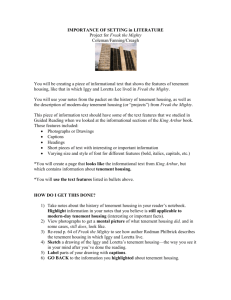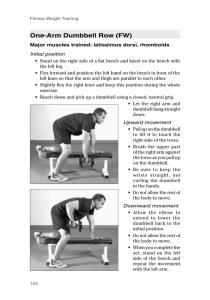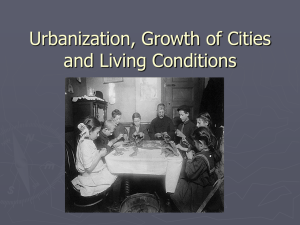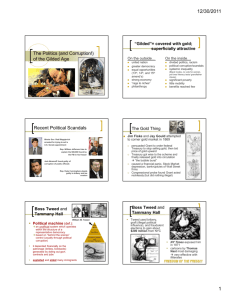Chapter 15 Section 3
advertisement
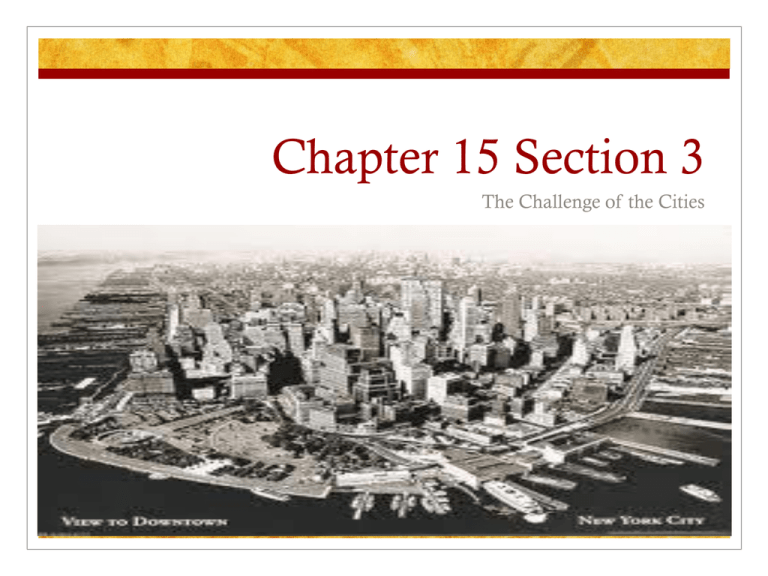
Chapter 15 Section 3 The Challenge of the Cities Suburb Residential communities surrounding cities Most people lived in the cities As they made more money and transportation improved, they could live further from where they worked Tenement Low cost apartment buildings designed to house as many families as the owner could pack in A group of dirty, run-down tenements could transform an area into a slum Dumbbell Tenement Named for its dumbbell shape Each building narrowed in the middle, and gaps on either side formed air shafts to bring light and air inside the rooms An improvement but… Still not an open balcony Garbage collected at the bottom of the shafts Describe living conditions in a dumbbell tenement Overcrowded Unsanitary Disease ridden Run down Low cost How did Jacob Riis expose the conditions that existed in tenement houses? Mastered new technology of flash photography Showed the photographs to people in lecture halls What were three technological developments that enabled cities to house more people? Elevator Subway Cable car Elevated trains Electric trolleys Bessemer process Political Machine An unofficial city organization designed to keep a particular party or group in power and usually headed by a single powerful “boss” What contributed to the rise of political machines? As city governments grew in size, wealth, and power, they became prizes to control. The machine enabled a local faction of one party to maintain control Who benefitted most from Boss Tweed’s control of New York City? Tweed and his allies benefitted the most His political machine was selfserving and bad for the population of New York City Graft The use of one’s job to gain profit Why did some people criticize graft? Graft is distasteful because it involves using one’s position of power to exploit others. List 4 challenges that people living in cities faced. Overcrowding Disease Danger of fires Contaminated water Lack in indoor plumbing
